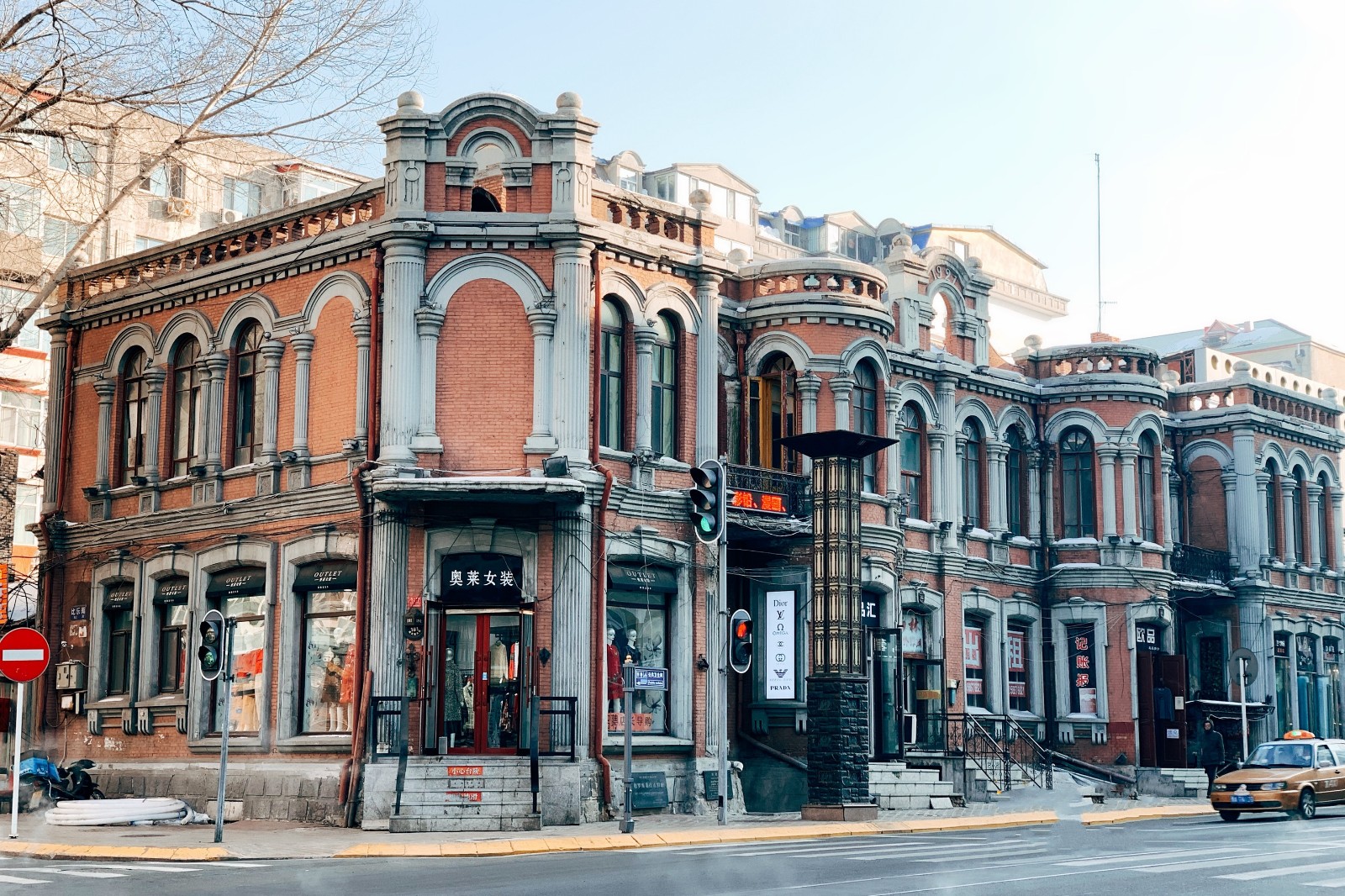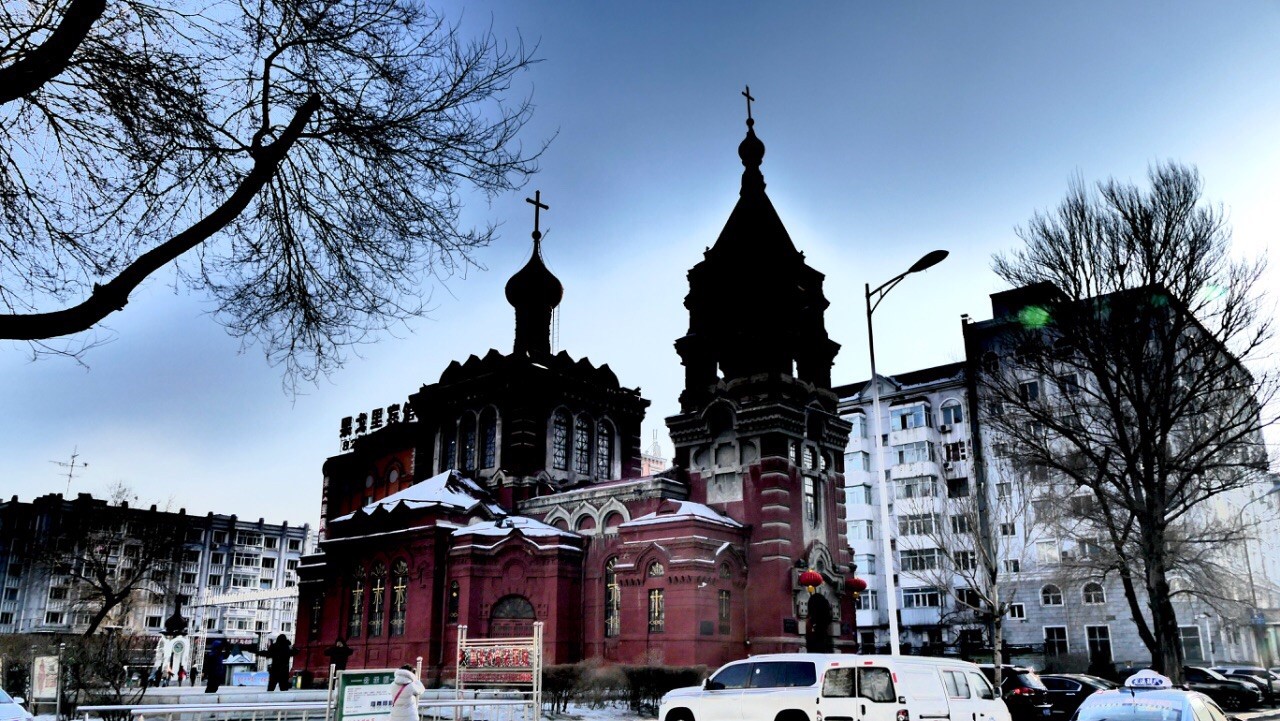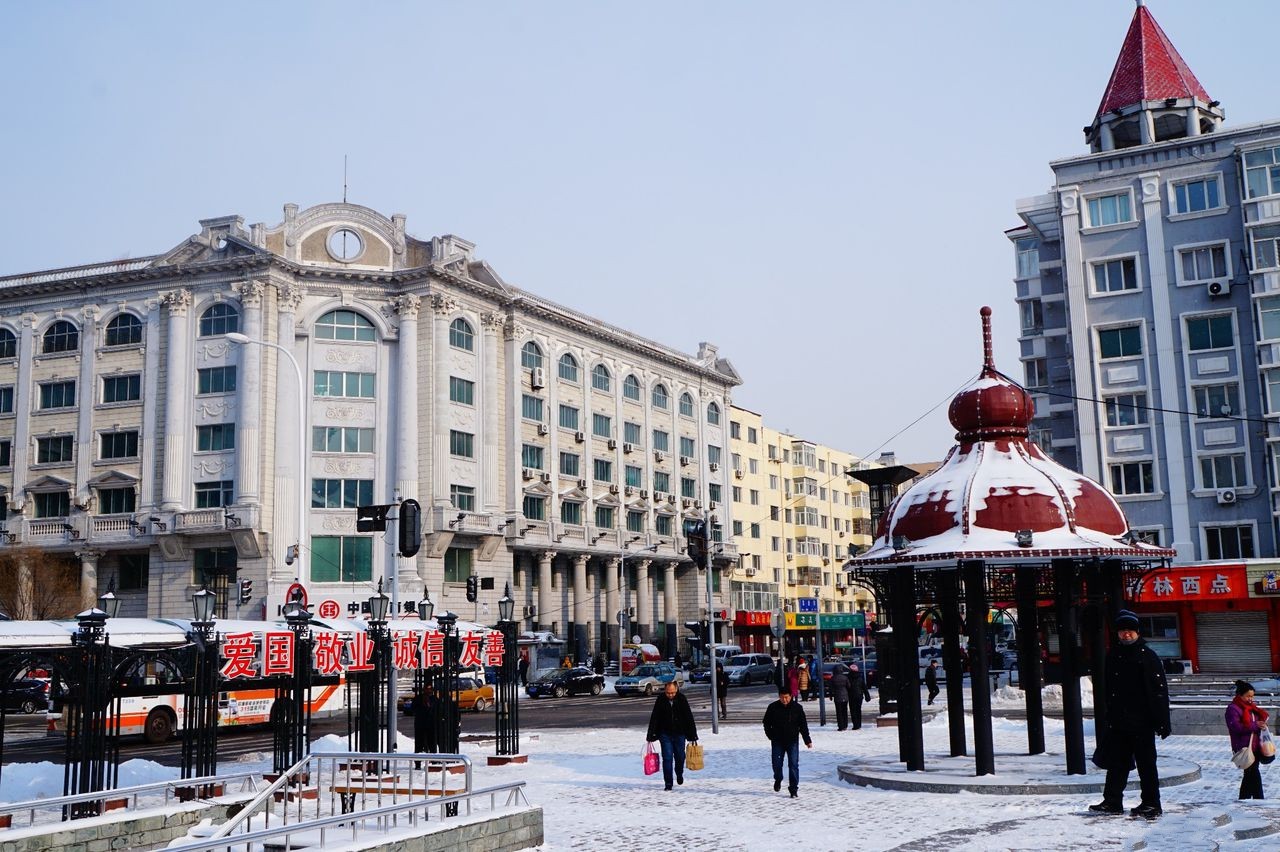Gogol Street
Gogol Street, or Guogeli Avenue, formerly known as the New Business District, built in 1901, it is located in central Nangang District of Harbin, with a length of 2642 meters. The street is named after Nikolay (Vasilyevich) Gogol (1809-1852), great Russian novelist, dramatist, satirist, founder of the so-called critical realism in Russian literature, best-known for his novel MERTVYE DUSHI I-II (1842, Dead Souls).
Gogol Street is Harbin's second biggest shopping district dotted with Russian buildings. On the south side of Gogol Street was Eastern Qing Railway Central Hospital (now Central Hospital of Harbin Railway). Built in 1904, the hospital covers an area of over 80,000 square meters. There are trees, flocks of Russian architecture. The typical Russian construction groups of hospital office building, clinics, attached house and Central Telephone Office in the backdrop of green shade constitutes rural scenery of the Far East Asia's. Give people a feeling of returning to nature.
The night scene of Gogol Street is very charming and attractive. The whole street road configured with 150 large European-style landscape lights, as well as garden lights, water lights, fence lights, and auxiliary lights, while accompanied by the building spotlights, forming irregular scattered colorful lighting landscape avenue.
- Central Street
- Dragon Tower
- Gogol Street
- Confucius Temple
- Harbin Ice Festival
- Ruins of the No.731 Unit of Japanese Aggressive Army Against China
- Harbin Mosque
- Harbin New Synagogue
- Harbin Polarland
- Saint Alekseyev Church
- Harbin Volga Manor
- Heilongjiang Provincial Museum
- Saint Sophia Church
- Siberian Tiger Park
- Sun Island Ice and Snow Art Gallery
- Sun Island
- Jinshangjing Historical Museum
- Harbin Jile Temple
- Songhua River
- Zhaolin Park
- Stalin Park
- Harbin Jewish Cemetery
- Harbin Grand Theater
- Harbin Polarland Park
- Harbin Snowflake Ferris Wheel



